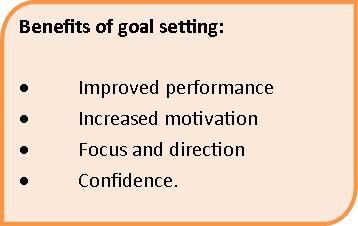Self confidence can get you far in this world. Employers, potential partners and friends all appreciate strong, self confident people. It's an admired trait. But even if you don't FEEL confident, there are ways to APPEAR confident, and when you succeed in doing that, you'll find that, very quickly, you actually feel as confident as you seem to be!
1: Practice exhibiting confidence through your body language

There is much evidence pointing to body language as a path to developing real self confidence. A 'fake it till you make it' approach can actually generate real confidence. So stand up straight, don't slouch, don't look at the floor. Pull your shoulders back, push out your chest a bit and have some space between your feet when you stand.
Also, don't touch your face when talking to others, this is a clear sign of a lack of confidence, don't play with your hair or look anywhere but the person you are talking to. .
2: Smile

Smile and let it show in your eyes. You'll see it not only makes a big difference in how people relate to you, but it also, eventually, makes you feel that much better.
3: Make eye contact and keep it
Don't be the first to look away. When your eyes meet another, hold the gaze, especially if you or they are talking. Don't stare, just move your eyes to theirs and hold, let them drop to the face and then back up. Don't break eye contact quickly, people who will immediately break eye contact give the impression that they either feel guilty for something, don't trust the person or are bored.
You can practice this with random people, and you may be surprised at their reaction when you get the nerve just to look them in the eyes. It will transmit confidence and interest.
4: Don't fidget
Compulsively moving your foot or nodding as someone else is talking transmits a lack of calm. To develop your self confidence, you'll need to be aware of your body and keep calm. If you feel yourself start to fidget, take a deep breath, disconnect for a moment and count to 3. Then release your breath and return to reality in control of your body.
5: Halt before you talk
When you are talking to another person, listen to them intently, don't cut them off and don't start talking immediately after they are done. Take 3 seconds to process the information, and then formulate a response that is quiet and shows that you really listened. Use specific details if possible. The time you take to think and process what the other person said would make you look more confident, wiser and kinder.
6: Let others speak
Continuing from our last point, try to get people to talk. Find out what questions they like being asked and encourage them to answer. People love being listened to, and once you do you'll discover there is always an advantage to knowing more about the person than they know about you. Also, the more open and direct you are in your questions, the more confident you'll seem. Just one word of advice: There is a thin line between being direct and being rude, find it and tread it carefully, you want to ask good questions but do it in a kind and offhand manner that'll put others at ease.
7: Don't cut people off
We return to this point because it is so common. Many of us just listen to the gist of what people are saying while waiting to give our own input. But being cut off is annoying, insulting and sometimes hurtful. Besides, you may miss out on important information. This takes a lot of patience, especially when people will just talk your ear off. But once you gain control of this need to give your own input right away, you'll discover it has powerful advantages. A man in control is a confident man, one who can listen to others' mistakes without having to correct them immediately.
On the other hand, if someone cuts you off, be assertive but calm, and ask politely that you be given the opportunity to finish. Don't look grouchy, they probably didn't mean to do it, just smile and be kind about it.
8: Dress well
It's amazing how much we get judged on visuals alone. You can take great advantage of that fact by being always well dressed.
Get an honest friend to tell you what looks good on you and what does not. Find a balance between comfort and a great look.
9: Exercise
Yes, even in an article about self confidence you won't escape this essential advice. Physical activity is a huge source of self confidence. Research has demonstrated that there is a direct link between sports and chemicals being released in the brain to cause euphoria.

Physical activity will also improve your looks, which will also add to your self confidence. And don't forget, just proving to ourselves what our bodies can do is a great boost to our confidence. Do any kind of physical activity for a better overall feeling and a great boost in self pride and respect.
10: Remember the good times
